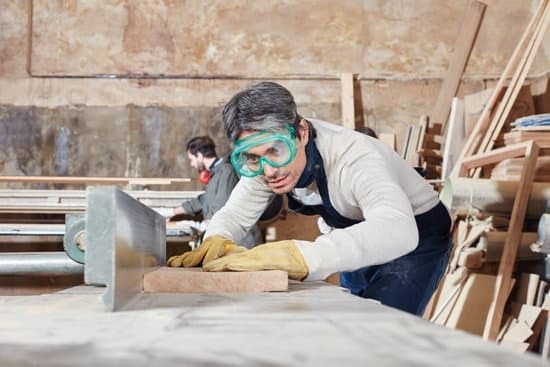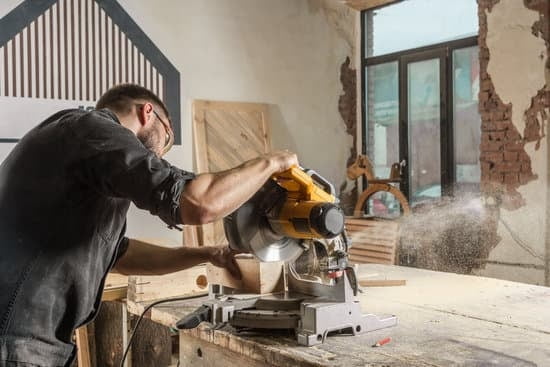Woodworking is a centuries-old craft that involves designing and constructing various objects using wood as the primary material. It is not only a practical skill but also an art form that allows individuals to unleash their creativity and create unique, functional pieces. At the heart of woodworking lies the importance of joinery, which refers to the techniques used to join separate pieces of wood together to form a sturdy and cohesive structure.
Joinery plays a vital role in woodworking as it determines the overall strength, durability, and aesthetic appeal of the final product. Poorly executed joinery can result in weak joints that are prone to splitting or coming apart over time, while precise and well-made joints ensure longevity and stability. One essential joinery technique that every woodworker should be familiar with is the dado joint.
The term “dado” refers to a specific type of joint that involves cutting or routing out a groove across one piece of wood which fits snugly into another piece of wood. This technique allows for stronger connections between boards, providing additional support and structural integrity. Dado joints are commonly used in cabinetry, shelving units, drawer construction, and other woodworking projects where strength and stability are paramount.
In this article, we will delve deeper into what dado woodworking entails, its history, types of joints, tools required for its creation, step-by-step guidance on creating dado joints, advantages and disadvantages of using this technique, real-life examples in various projects, expert recommendations and techniques for mastering dado woodworking.
By exploring these aspects thoroughly, we hope to showcase the versatility and significance of dado joints in woodworking while inspiring readers to explore this technique further in their own woodwork creations.
What is a Dado Woodworking
A dado joint is a type of joinery technique commonly used in woodworking projects. It involves creating a slot or groove on one workpiece that perfectly fits another piece, allowing them to fit together seamlessly. The dado joint is known for its strength and stability, making it a popular choice among woodworkers for various applications.
In dado woodworking, the dado joint plays a significant role in the overall structure and design of the project. By creating a precise and snug fit between two pieces of wood, the dado joint enhances the durability and stability of the finished product. This type of joint is commonly used to connect shelves to cabinets or bookcases, as well as to create secure joints in table legs or drawer dividers.
One of the main advantages of using dado joints in woodworking is their ability to increase load-bearing capacity. Since the weight is evenly distributed across the entire length of the joint, it can support heavier objects with ease. Additionally, dado joints provide excellent support for shelves and prevent sagging over time.
To create a dado joint, various techniques and tools can be used depending on the project requirements. Commonly used tools include table saws, router tables, chisels, and hand saws. Table saws with dado blades are particularly effective for creating straight and precise dados.
In summary, understanding what a dado joint is and its significance in woodworking projects is essential for any woodworker looking to create strong and durable pieces. From providing structural support to enhancing load-bearing capacity, dado joints are versatile joinery techniques that add both strength and aesthetic value to wooden creations.
The History of Dado Joints
The art of woodworking and joinery has been practiced for centuries, with the goal of creating strong and durable wooden structures. One technique that has stood the test of time is the dado joint. In this section, we will delve into the history of dado joints and explore how they have evolved over time.
The origins of dado woodworking can be traced back to ancient civilizations such as Egypt, Greece, and Rome. These early woodworkers used simple tools like chisels and hand saws to create dado joints in their furniture and architectural structures. The dado joint was valued for its strength and ability to provide a flush surface between two pieces of wood.
As woodworking techniques advanced, so did the methods for creating dado joints. During the Middle Ages, craftsmen began using more sophisticated tools like planes and routers to shape wood more precisely. This allowed for more intricate designs and precise joinery, including dado joints.
In the modern era, advancements in technology have revolutionized woodworking practices. Power tools such as table saws, routers, and dado blades make it easier than ever to create precise dado joints in a fraction of the time it would take with hand tools alone. These advancements have opened up new possibilities for woodworkers, allowing them to create intricate designs and stronger joints.
Overall, the history of dado joints is a testament to the ingenuity and craftsmanship of woodworkers throughout history. From simple chisels to advanced power tools, the evolution of woodworking techniques has paved the way for improved joinery methods. Today, woodworkers continue to use dado joints in a wide range of projects, from cabinets and shelves to flooring and paneling.
| Period | Main Tools |
|---|---|
| Ancient civilizations | Chisels, Hand saws |
| Middle Ages | Planes, Routers |
| Modern era | Table saws, Routers, Dado blades |
Types of Dado Joints
Dado joints are one of the most versatile and commonly used types of joinery in woodworking. They provide a strong and reliable connection between pieces of wood, making them ideal for a wide range of applications. This section will explore the different variations and applications of dado joinery in woodworking.
One of the most common types of dado joints is the through dado joint. This type of joint involves cutting a groove across the grain on one piece of wood that matches the width and depth of another piece. The second piece then slides into the groove, creating a strong connection between the two pieces. Through dado joints are often used to create bookshelves, cabinets, and other furniture where strength and stability are essential.
Another popular variation is the stopped dado joint. In this type of joint, the groove does not extend all the way across the workpiece but rather stops before reaching one or both ends. Stopped dado joints are commonly used to create shelves within cabinets or bookcases, as they allow for seamless integration without visible exposed edges.
Box joints, also known as finger joints, are another type of dado joint that is frequently seen in woodworking projects. Box joints consist of interlocking fingers that fit snugly together, creating a strong connection between two workpieces. They are often seen in drawers or boxes where strength and accuracy are crucial.
One exciting application for dado joinery is in creating decorative effects on furniture or cabinetry. By using a router with different bits or tools, woodworkers can create intricate patterns or designs within their dado joints, adding visual interest to their projects.
Overall, understanding the various types of dado joints allows woodworkers to choose an appropriate method based on their specific needs and requirements for each project. By utilizing this versatile joinery technique effectively, woodworkers can create strong and visually appealing pieces that stand the test of time.
| Type | Description | Common Applications |
|---|---|---|
| Through Dado Joint | A groove cut across the grain on one piece of wood that matches the width and depth of another piece. | Bookshelves, cabinets, furniture |
| Stopped Dado Joint | A groove that does not extend all the way across the workpiece but stops before reaching one or both ends. | Cabinets, bookcases, shelves |
| Box Joint (Finger Joint) | Interlocking fingers that fit together to create a strong connection between two workpieces. | Drawers, boxes, furniture joints requiring strength and accuracy |
Tools and Equipment
When it comes to creating dado joints in woodworking projects, having the right tools and equipment is crucial. These tools ensure precision and accuracy in cutting the grooves necessary for a strong dado joint. Here are some essential tools that every woodworker should have when working with dado joinery:
Table Saw
A table saw is one of the most important tools for creating dado joints. It allows you to make precise cuts and adjust the width of the groove according to your needs. With a table saw, you can easily cut straight and accurate dados without any hassle.
Dado Blade Set
A dado blade set is specifically designed for making dado joints. It consists of two outer blades and multiple chipper blades that help create clean and consistent grooves. The width of the groove can be adjusted by adding or removing chipper blades, giving you great flexibility in your woodworking projects.
Router
Although not essential, a router can be used as an alternative to a table saw for creating dado joints. A plunge router equipped with a straight bit allows you to rout out precise grooves effortlessly. This option is particularly useful when working on smaller pieces or when you need more control over the depth of the groove.
Chisel
A chisel is handy for cleaning up the bottom of a dado joint after making initial cuts with a table saw or router. It helps remove any rough edges or excess material, ensuring a smooth and snug fit for the mating piece.
Measuring Tools
Accurate measurements are crucial in woodworking, especially when it comes to creating dado joints. Therefore, having measuring tools such as a tape measure, combination square, or caliper is essential for ensuring precise cuts and dimensions.
By having these essential tools in your woodworking arsenal, you will be well-prepared to create dado joints with precision and ease. Remember to always prioritize safety when using power tools and follow proper techniques for the best results.
Step-by-Step Guide
Creating a dado joint in woodworking requires careful planning and precise execution. Follow this step-by-step guide to learn how to create a dado joint for your woodworking projects.
Step 1: Gather the Necessary Tools
Before starting the process, make sure you have all the essential tools at hand. You will need a router with a dado blade or a table saw with a dado set, a measuring tape or ruler, marking tools such as pencils or markers, and clamps to secure the pieces in place.
Step 2: Measure and Mark the Wood
Measure and mark the location where you want to create the dado joint on both pieces of wood. Ensure that the measurements are accurate and align correctly when assembled.
Step 3: Set Up your Router or Table Saw
If you are using a router, install the appropriate width dado blade based on your measurements. Adjust the height of the blade according to your desired depth for the dado joint. If you are using a table saw, install the dado set and adjust it to achieve your desired width and depth.
Step 4: Make Test Cuts
Before making cuts on your actual workpiece, it is recommended to make test cuts on scrap wood first. This allows you to ensure that your settings are correct and helps prevent mistakes on your project piece.
Step 5: Create the Dado Joint
Secure one piece of wood firmly in place either with clamps or another appropriate method. Slowly pass it through the router or table saw along with its marked line until you reach one end of your marked area. Repeat this step for all sides of the marked area.
Step 6: Check for Accuracy
After completing all cuts, carefully test-fit both pieces of wood together to check if they fit perfectly. Make any necessary adjustments if the fit is too tight or loose.
Step 7: Glue and Assemble
Apply a suitable woodworking glue to both sides of the dado joint. Join the pieces together and secure them with clamps until the glue dries completely.
By following these steps, you can create a strong and durable dado joint in your woodworking project. Remember to practice caution while handling power tools and always wear appropriate safety gear.
Advantages and Disadvantages of Using Dado Joints
Dado joints are a popular choice in woodworking projects due to their many advantages. One of the main benefits of using dado joints is their exceptional strength and durability. This type of joint provides a solid connection between two pieces of wood, making it ideal for creating sturdy furniture and structures. The interlocking design of the dado joint distributes weight evenly across the joint, reducing the risk of failure or breakage.
Another advantage of using dado joints is their versatility. Dado joints can be used in a variety of woodworking projects, including cabinets, shelves, and bookcases. They are particularly useful for joining panels together, as they provide extra support and prevent warping or shifting over time. Additionally, dado joints allow for easy assembly and disassembly, making them convenient for projects that may need to be taken apart or modified in the future.
Despite their many advantages, dado joints do have some disadvantages to consider. One potential drawback is that creating dados can be time-consuming and requires precise measurements and cuts. It is important to carefully plan and measure each cut to ensure a proper fit.
Another disadvantage is that dado joints may weaken the structural integrity of the wood if not executed properly. If too much material is removed or if the joint is not cut accurately, it can compromise the overall strength of the piece.
Examples of Dado Applications
Dado joints are a foundational element of woodworking, and their applications can be seen in various woodworking projects. This section will showcase real-life examples of dado joints in different woodwork pieces to illustrate their versatility and usability.
One common example of the dado joint application is in bookshelves and cabinets. Dado joints are often used to create strong and sturdy shelves that can withstand the weight of books, decor items, or storage containers.
The dado joint allows for seamless integration between the shelf and the sides of the bookshelf or cabinet, providing stability and preventing sagging over time. Additionally, dado joints help eliminate the need for additional support brackets or hardware, resulting in a clean and minimalistic aesthetic.
Another example where dado joints find frequent use is in drawer construction. Dado slots are cut into the sides of the cabinet or dresser box to accommodate the bottom panel of the drawer. This type of dado joint ensures a snug fit for the drawer bottom while allowing it to glide smoothly when opening and closing. By incorporating dado joints into drawer construction, woodworkers can create durable drawers that can handle regular use without compromising functionality.
In furniture making, dados are often employed in table aprons or legs to secure panels or slats. For example, a dining table might feature a tabletop secured with multiple long dado joints running along its edge to attach it firmly to the apron and prevent any wobbling or movement during everyday use. Similarly, bed frames may utilize dado joints between headboards, footboards, and side rails to ensure stability and durability.
These examples represent just a few instances where dado joints are frequently utilized in woodworking projects. Their versatility allows woodworkers to explore many creative possibilities while ensuring sturdy connections between various components of furniture pieces. By referring to these real-life examples, aspiring woodworkers can gain inspiration for their own projects and understand the practical applications of this essential joinery technique.
Tips and Tricks
Selecting the Right Wood for Dado Joints
When it comes to mastering dado woodworking, one of the crucial factors to consider is selecting the right type of wood for your dado joints. The choice of wood can significantly affect the strength and durability of your joints. It is important to choose a hardwood that is not prone to splitting or warping, such as oak or maple. These dense woods provide excellent stability and are less likely to deform over time.
Additionally, pay attention to the grain orientation when selecting your wood. For dado joints, it is best to choose wood with straight grain patterns rather than highly figured or curly grains. Straight-grained wood is easier to work with and ensures a clean and precise fit for your joints.
Accurate Measurements and Testing
Precision is key when it comes to creating successful dado joints. Taking accurate measurements before cutting your joinery is essential for achieving a snug fit. Use a reliable tape measure or calipers to measure both the width and depth of your dado joint.
Once you have made your cuts, it is crucial to test-fit the joint before applying any glue or fasteners. This step allows you to make necessary adjustments if the joint doesn’t fit properly. Remember that a tight fit is ideal, but you don’t want it so tight that it requires excessive force or causes damage during assembly.
The Importance of Glue Application
While selecting the right woodworking glue may seem like a minor detail in dado joinery, understanding its importance can greatly contribute to making stronger joints. When applying glue for dado joinery, ensure even coverage along both mating surfaces of the joint.
It is recommended to use an adhesive with gap-filling properties as this helps create a strong bond even if there are minor imperfections in the joint’s fit. Additionally, applying slight pressure during assembly can help evenly distribute the glue, ensuring maximum contact between the mating surfaces.
Remember to remove any excess glue that squeezes out of the joint using a damp cloth or chisel. Excess glue can interfere with your finish later and compromise the final appearance of your project.
By following these tips and tricks, you can enhance your skills in dado woodworking and create joints that are both aesthetically pleasing and structurally sound. Remember that practice is key, so don’t be discouraged if your first attempts are not perfect. Keep refining your technique, experimenting with different approaches, and soon you will master the art of dado joinery.
Conclusion
In conclusion, dado joints play a crucial role in woodworking projects. They provide strength, stability, and visual appeal to various woodwork pieces. Throughout history, dado woodworking techniques have evolved and adapted to different needs and preferences. From simple butt joints to more intricate variations like stopped dadoes and rabbet dadoes, there is a wide range of applications for dado joinery.
The use of dado joints offers several advantages in woodworking. They create strong connections between wooden parts, preventing the risk of separation over time. Additionally, dado joints provide increased surface area for glue application, enhancing the bond between pieces. Moreover, dado joints can add aesthetic value and decorative features to furniture or other woodworking projects.
While there are advantages to using dado joints, it is important to acknowledge their limitations as well. Dado joints require specific tools such as a table saw or router with a dado blade or bit, which may not be accessible to all woodworkers. Furthermore, precision and careful measurements are necessary to ensure proper fit and alignment of the joint.
Overall, exploring and mastering the art of dado woodworking opens up a world of possibilities for creating unique and high-quality woodwork pieces. Whether you’re building shelves, cabinets, or picture frames, incorporating dado joints can elevate the craftsmanship and durability of your projects. So go ahead and dive into the world of dado joinery – you’ll be amazed at the versatility and beauty these joints can bring to your woodworking creations.
Frequently Asked Questions
What is dado in woodworking?
In woodworking, a dado refers to a groove or channel that is cut into a piece of wood. It is usually created by making repeated cuts with a table saw or router, resulting in a rectangular or square-shaped recess.
Dados are commonly used to join two pieces of wood together, such as for constructing shelves, cabinet frames, or drawer dividers. They provide stability and can enhance the overall strength of the joint, ensuring that the pieces remain securely connected.
What is the difference between a dado and a rabbet?
While both dado and rabbet joints involve creating recesses in woodworking, there are some key differences between the two techniques. A dado is typically a wider and longer groove that runs across the grain of the wood and is designed to receive another piece of wood with matching dimensions.
On the other hand, a rabbet is a similar recess but it is typically cut on the edge or along the end grain of a board, creating a step-like profile rather than an entirely enclosed channel like a dado. Rabbets are often used to create overlapping joints or to provide clearance for doors, panels, or glass in furniture construction.
What are the disadvantages of a dado?
Despite their many advantages in woodworking, dados do have some limitations and disadvantages to consider. One disadvantage is that cutting accurate dados can be time-consuming and tedious since they often require multiple cuts and precise measurements. Additionally, dado joints may weaken the structural integrity of long boards by removing material from them – this reduction in thickness can compromise their overall strength under heavy loads.
Lastly, when working with certain materials like plywood or particle board, dado joints may cause splintering or tear-out due to their layered construction. To overcome these downsides, it’s crucial to carefully plan out your cuts and use appropriate techniques such as using sacrificial boards or reducing feed rates during cutting operations involving these materials.

Hi everyone! I’m a woodworker and blogger, and this is my woodworking blog. In my blog, I share tips and tricks for woodworkers of all skill levels, as well as project ideas that you can try yourself.





